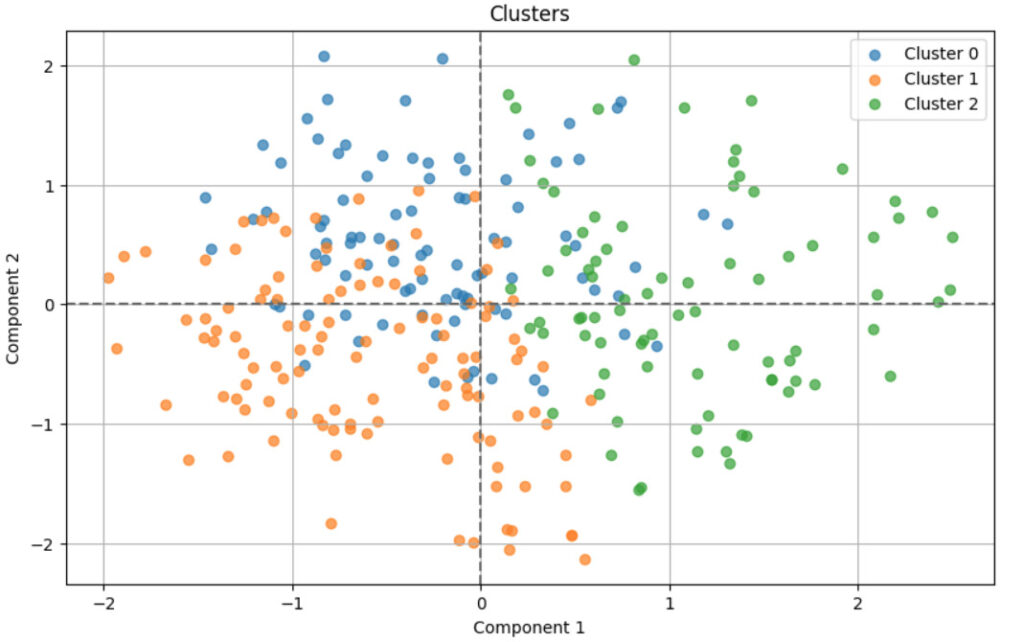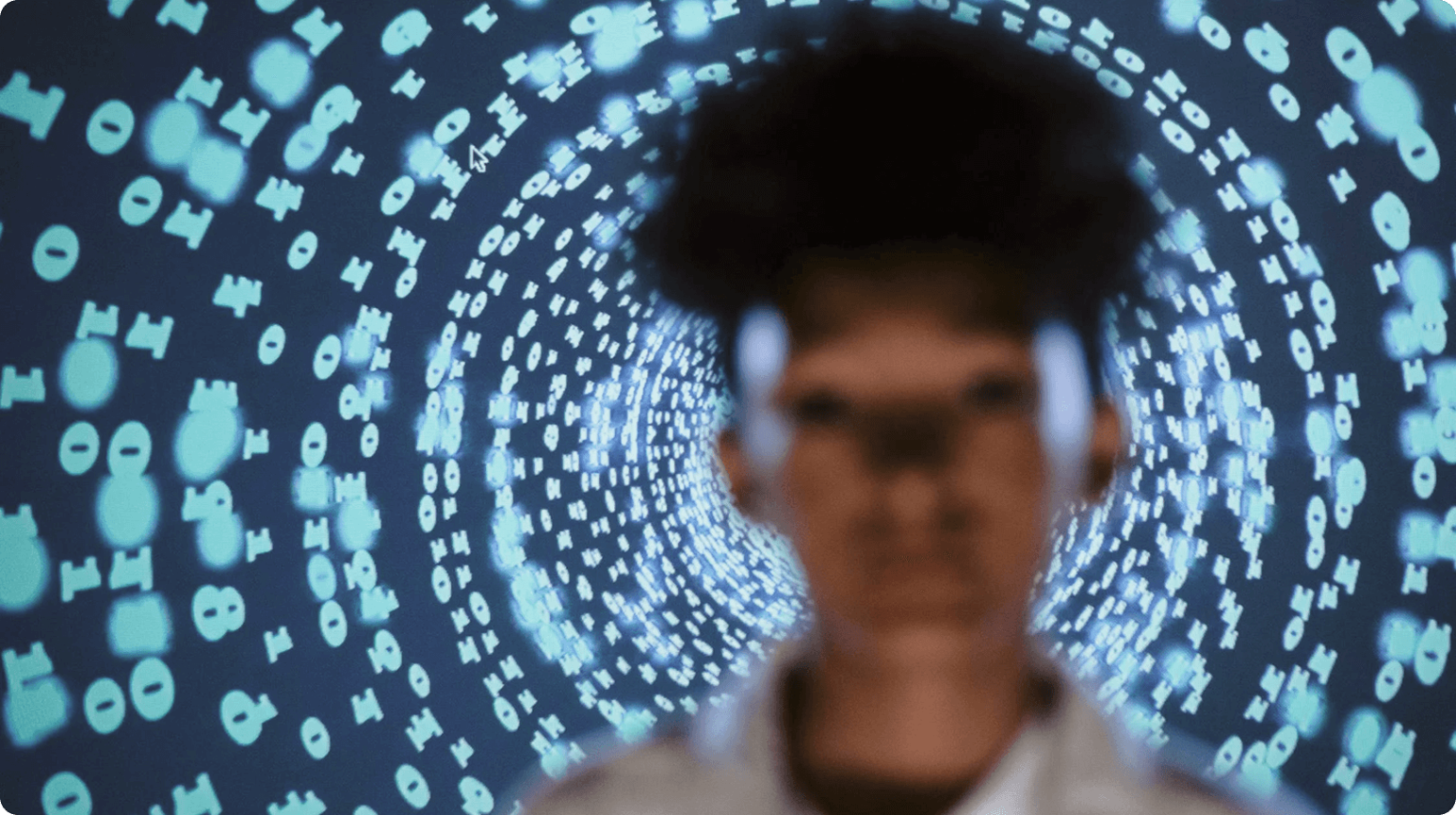Back to all insights
How to use AI to surface evolving trends (even before they arise)
Silvia Segura
Strategist Lead
Consumer behavior is not static.
With increased access to information, social media and social movements, our behavior shifts more rapidly than ever, making it difficult to keep up with consumer segmentation.
That’s where AI comes into play:
AI-powered clustering can help uncover new micro-segments and surface evolving trends and consumer preferences that traditional methods miss.
The problem with traditional segmentation
People don’t fit into neat boxes anymore. Static segments like “Gen Z” or “Millennials” miss the nuance.
Today’s consumers are fluid and interests shift with each scroll, like, or trend. Relying on traditional and static segmentation can create missed opportunities for businesses.
Enter AI-powered clustering
AI helps us move beyond basic demographics. Clustering algorithms like k-means and hierarchical clustering group people based on what actually matters:
- their attitudes,
- actual behaviors,
- and preferences on specific issues.
Not just age or buying power.
From
To
Manual and time-consuming sifting through large data sets; looking for evident (surface-level) patterns
AI-driven synthesis and uncovering of deep consumer insights from large data sets
Traditional segmentation based on static, historical demographic and behavioral data
Dynamic micro segments; continuously updated with new behavioral and reactionary data
Brands reacting to consumers’ past behavior, expressed needs and current trends
Brands predicting consumer needs and desired, including unexpressed preferences
Consumer insights team interpreting data reactively; relying on outdated frameworks
Proactively using incoming, real-time data to continually update and evolve segmentation frameworks
Marketing strategies designed for static consumer segments
Dynamic marketing that adapts to evolving and emerging micro segments
Real-world example of AI-powered research
AI-powered clustering in traditional research
In a recent client project on hygiene products, we used clustering techniques to uncover unique consumer groups we’d never see with standard filters: Low Concern Minimalists
They weren’t defined by gender or income, but by a shared mindset and interested in unconventional benefits like advanced cleansing formats or unconventional wellness claims.
Without clustering, this valuable insight would have likely slipped through the cracks. By letting the data guide us, we uncovered a micro-segment with a unique combination of characteristics, behaviors, needs, and preferences—and revealed entirely new opportunities to connect with them through messaging that truly speaks their language.

Visual representation of hygiene products consumer segments identified via K-means clustering.
Each dot represents a respondent; colors indicate cluster assignment.
A new type of AI-powered research: Agentic Social Listening
The potential of AI-powered clustering goes far beyond traditional research.
In a pioneering project with a fintech brand preparing to launch a credit card for Gen Z consumers, we used advanced clustering methods to gain a deep understanding of the “under-25” audience (their attitudes, cultural cues, and content preferences) through the lens of their organic online behavior.
Using Agentic Social Listening, we gathered over 150,000 social media mentions from platforms like TikTok, Reddit, and Instagram, and extracted rich signals from video transcripts, comments, and visuals, enabling us to apply visual clue clustering. That method organizes content based on shared aesthetic and contextual patterns.
Through this approach, we identified 10+ distinct Gen Z sub-segments, each built around a unique cultural theme—from sports and anime to sustainable fashion and high-adrenaline interests like motorcycles and speed sports.
From cluster to create: How to actually use them?
Identifying clusters is just step one.
The real power comes when you activate them. Fast.
Here’s how we do it
Once micro-segments are mapped, we plug their behavioral and cultural data directly into creative agents.
These AI models generate tailored campaign assets on the fly: everything from messaging and visuals to packaging ideas and content formats, aligned with each segment’s emotional and aesthetic codes.
The agents we built autonomously created visual mockups and messaging tailored to this group’s tone, culture, and content style. These outputs weren’t static; they evolved across iterations with different clusters, constantly optimizing communication to better engage each micro-segment.
One of the biggest opportunities this method unlocks is the shift from insight to immediate execution. With these models, you’re not just discovering who your audience is. You’re acting on that intelligence, instantly.
Creative agents take the cluster-specific data (like visual preferences, tone, or behavioral pain points) and use it to generate ready-to-use brand assets, campaign ideas, packaging mockups, and product messaging that feels hyper-personalized.
That means no lag between insight and execution.
This is especially powerful in fast-moving categories like lifestyle, consumer goods or youth finance. This setup lets you:
- Skip the middle step: go from segment to campaign-ready creative instantly
- Tailor design, tone, and storytelling to match each group’s vibe
- Refresh content dynamically as clusters evolve
It’s not about “understanding” your audience anymore but about creating for them in real time.
Why this matters: 10 opportunities this brings to businesses
1. Understanding evolving behavior
Group people or entities based on real-world behavior—what they do, not just who they are.
Use it for
Spotting changing user habits, lifestyle shifts, or usage trends.
Example
Detect clusters of people who suddenly start cooking at home more, or those reducing digital screen time—regardless of their demographics.
2. Responding to shifts in real time
Continuously update clusters as new data flows in—capturing emerging needs or patterns.
Use it for
Adaptive systems that adjust on the fly (like services, products, experiences).
Example
Re-cluster users weekly to reflect current preferences or environmental conditions—like shifting from “travel planning” to “budget anxiety.”
3. Finding the hidden common denominator
Group people/things based on deep similarities—often hidden in complex data.
Use it for
Uncovering surprising connections that wouldn’t appear in top-level analytics.
Example
Grouping users across different platforms who respond to the same type of humor or visual format.
4. Building better prototypes, faster
Inform prototyping by showing the diversity within your audience or system.
Use it for
Testing concepts across real-life behavioral clusters—not arbitrary segments.
Example
Create 3–5 concept variations matched to real-world clusters (e.g. “convenience-maximizers” vs. “value-seekers”) for rapid iteration.
5. Compressing noisy data into actionable insight
Summarize messy inputs (qualitative surveys, usage logs, open text) into coherent clusters.
Use it for
Making sense of diverse feedback or unpredictable systems.
Example
Analyze thousands of data points across sources (like social media) to condense and form distinct groups.
6. Revealing identity beyond labels
Build fluid personas based on behavior and belief systems rather than static attributes.
Use it for
Creating more nuanced profiles that reflect lived experience.
Example
Identify people who make eco-conscious choices but reject “green” branding, revealing tensions between action and identity.
7. Guiding personalization without overfitting
Create flexible groups that allow for meaningful personalization, without assuming you know exactly what each individual wants.
Use it for
Balancing personalization with scalability.
Example
Recommend solutions based on flexible clusters of intent (e.g., “explorers” vs. “optimizers”) rather than overly-specific personal data.
8. Identifying early signals
Detect early signals forming into emerging behaviors or patterns.
Use it for
Foresight, innovation scouting, trend monitoring.
Example
Spotting a new type of decision-making logic emerging among users before it goes mainstream.
9. Localizing decision-making
Apply clustering dynamically within a specific geography, culture, or community.
Use it for
Designing interventions, policies, or solutions tailored to real-life contexts.
Example
Instead of applying a global persona, cluster by actual on-the-ground realities (e.g., “urban heat avoiders” vs. “resilient commuters”).
10. AI-assisted strategic foresight
Use dynamic clustering to simulate how audiences may evolve under different future scenarios.
Use it for
Planning resilient, future-ready strategies (for product lines, policies, or services).
Example
See how today’s niche segments (e.g., “tech-cautious eco-maximalists”) might grow or shrink under different tech or economic trends.
Do I need to be a programmer?
No! That’s the beauty of it.
You can use no-code tools like Conjointly Clustering Demo or OpinionX Cluster Tab, AI-powered platforms that automatically analyze and group survey responses based on similar responses or unique, strong opinions.
This allows you to identify emerging micro-segments quickly and with greater precision without having to sift through data manually.

Opinion X view of the clustering feature
Or, if you’re feeling adventurous, use simple Python code to run your own clustering models.
Here’s a quick example:
from sklearn.cluster import KMeans
import pandas as pd
# Example: Load or prepare your cleaned and relevant dataset
# Ensure the DataFrame `df` is preprocessed and ready for clustering
# Step 1: Select features for clustering
features = df[["feature_1", "feature_2", "feature_3"]]
# Step 2: Define the number of clusters
num_clusters = 3
# Step 3: Initialize and fit the KMeans model
kmeans = KMeans(n_clusters=num_clusters, random_state=42, n_init=10)
df["Cluster_Label"] = kmeans.fit_predict(features)
# Step 4: Create and display cluster profiles
# Replace 'profile_columns' with columns you want to profile the clusters by
profile_columns = ["feature_1", "feature_2", "feature_3"]
cluster_profiles = df.groupby("Cluster_Label")[profile_columns].mean().round(2)
# Display results
print(cluster_profiles)
Don’t want to code? Ask an LLM to help you out. With a well-crafted prompt, these models can write the code for you, or even run the clustering for you.
AI is changing insights
AI-powered clustering isn’t just a smarter way to segment. You can use it as a strategic unlock across your whole organization.
Whether you’re a data analyst, marketer, or brand strategist, adopting AI-driven insights will not only help you discover emerging consumer trends but also allow you to anticipate needs and preferences before they become widespread.
Stop guessing who your audience is. Let AI show you who’s actually out there and how to build for them, with them, in real time.
Let’s talk about how you can use AI to drive real business impact.
Keep learning
More resources on AI Strategy-powered growth

Guide
AI Strategy Playbook

Insight
Practical guide to finding and delivering real value wtih AI

Webinar
Building your AI Strategy
The post How to use AI to surface evolving trends (even before they arise) appeared first on BOI (Board of Innovation).







